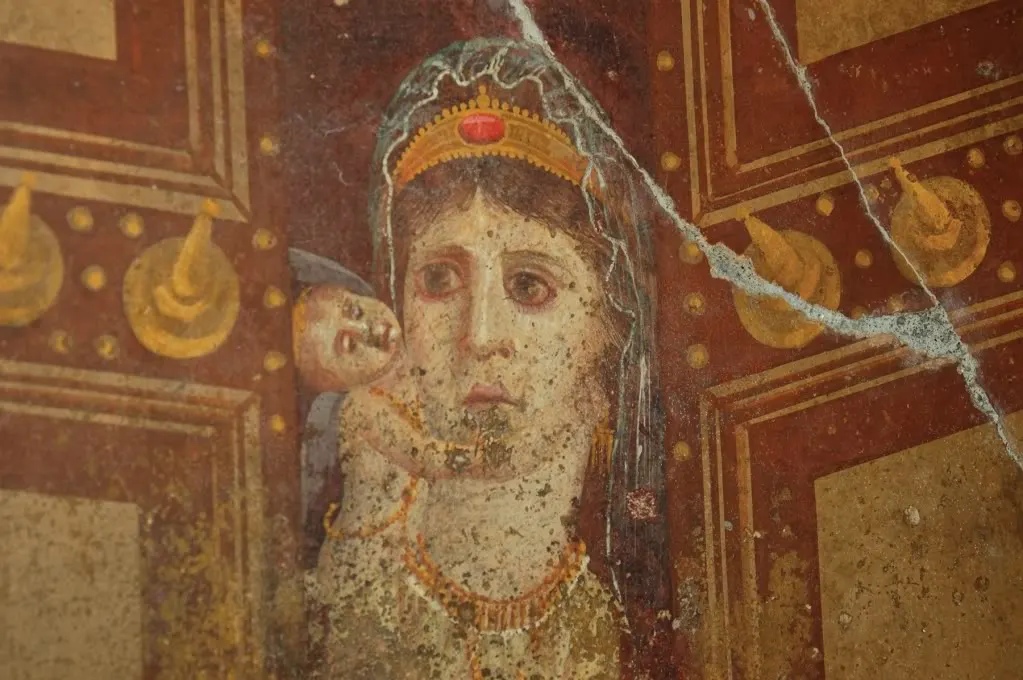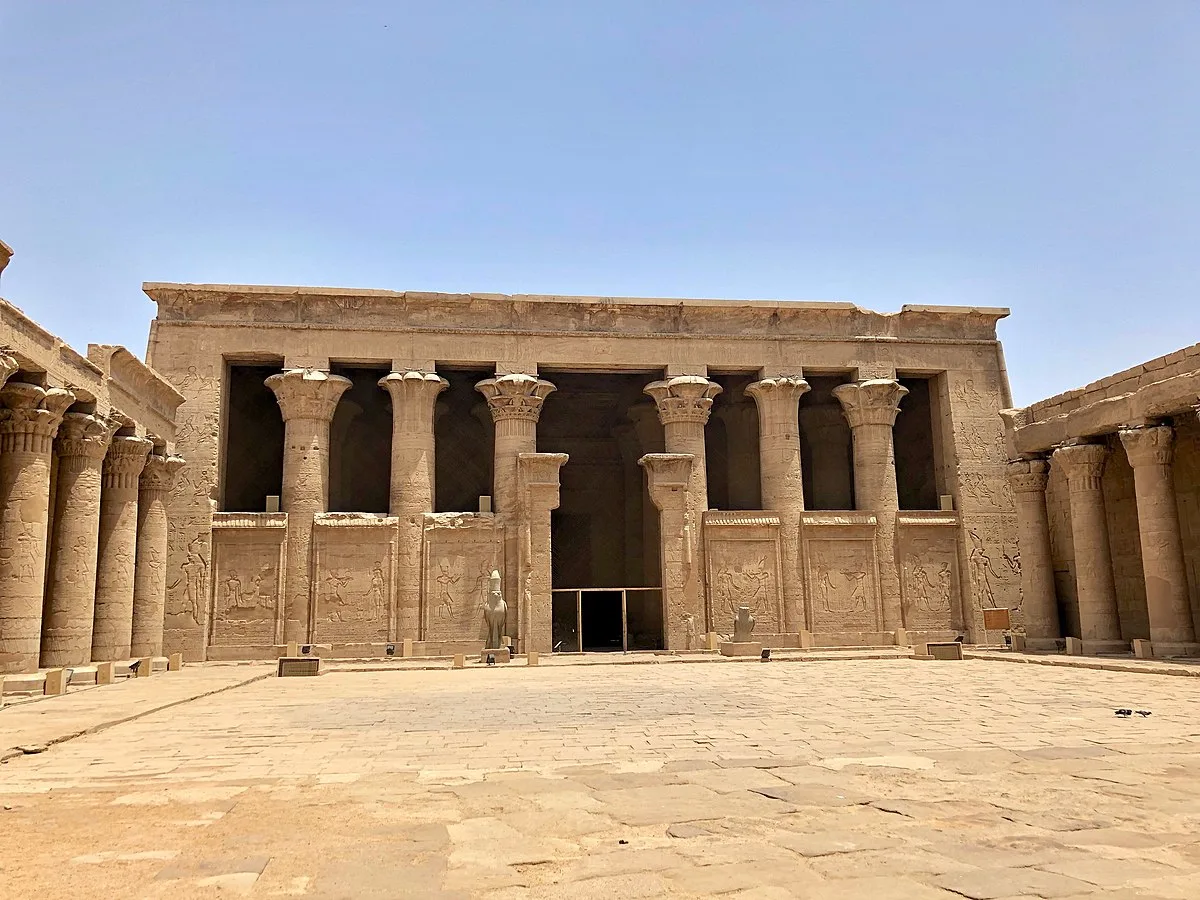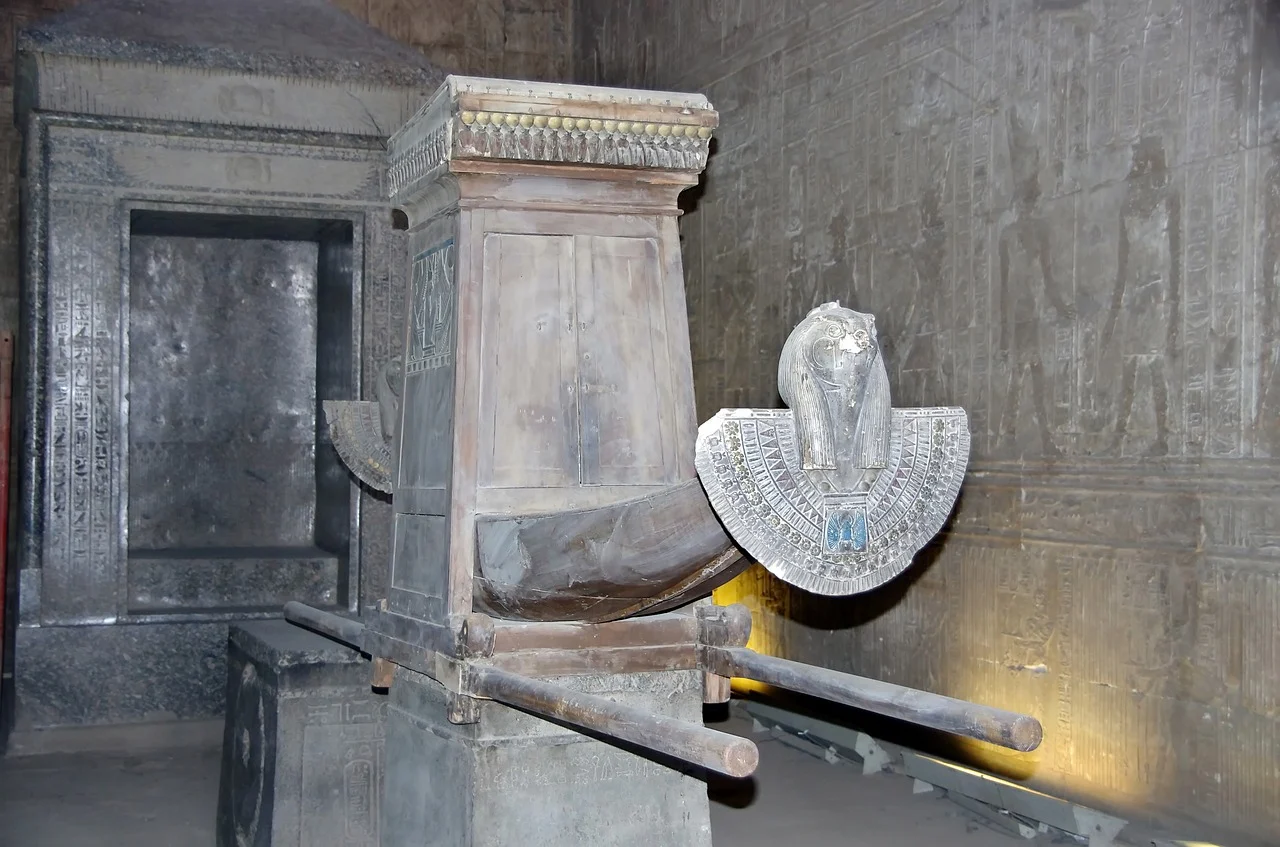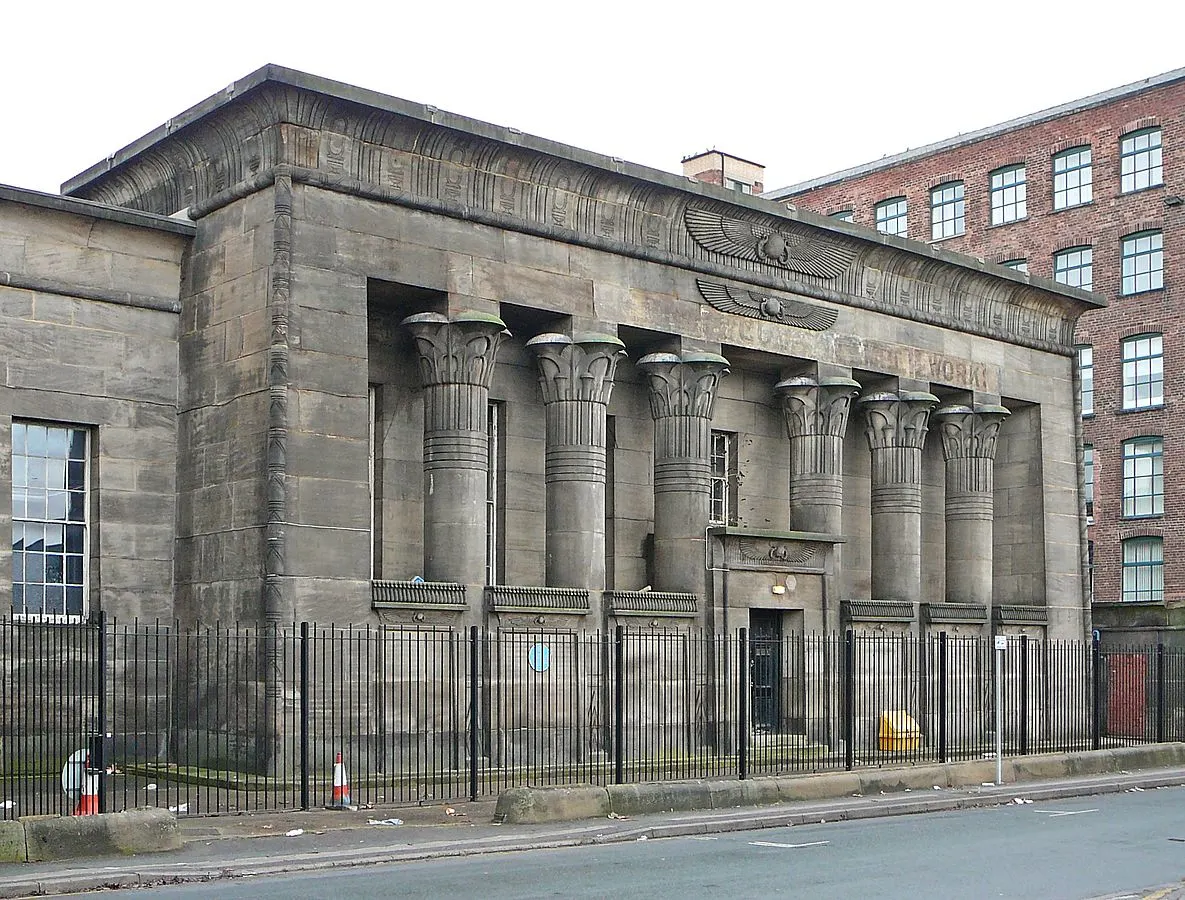The Ancient Egyptians built Countless temples and pyramids that still make us stand in awe multiple millennia later.
This marvelous temple isn’t any different, even though it was built at the end of the Egyptian Dynasties of the ancient world.
In this post, we’ll take a closer look at some interesting facts about the Temple of Horus at Edfu, one of the most fascinating attractions in Egypt that teaches us a lot about the 1st three centuries B.C.!
1. The temple is located in a city between Esna and Aswan
The Temple of Horus is located in the Egyptian city of Edfu in the southern part of the country. It’s situated between Luxor, world-famous for its temple complex and The Karnak Complex, and the large tourist city of Aswan, which has a population of over 1.5 million inhabitants.
Edfu is a relatively small town with about 60,000 residents and is situated on the west bank of the River Nile. It’s also the location of an ancient village called “Tell Edfu” and there are some ancient Egyptian pyramids located 5 km (3.1 mi) south of the town as well.

2. It was built in the Ptolemaic Kingdom
The temple was built during the Ptolemaic Kingdom of Ancient Egypt. This Dynasty was founded in the year 305 B.C. by Ptolemy I Soter, an associate of Alexander the Great.
This kingdom ruled until the year 30 B.C., which was the year that the last Pharaoh of Egypt died, the world-famous Cleopatra. Her death ended both the final and longest dynasty in Ancient Egypt and Egypt became part of the Roman Empire after that.

3. It was dedicated to one of the most important deities
The temple was dedicated to Horus, one of the most important gods in Ancient Egypt which served countless purposes. Some of the most important ones were the god of the sky and that of Kingship.
Horus had a long track record in Ancient Egypt as he was worshipped ever since Late Prehistoric Egypt, a period that lasted until 3100 B.C. According to Greek models, Horus was identified as the god Apollo who was equally important in Greek Mythology.

Horus was often depicted as a falcon and multiple such statues can be found at his temple in Edfu.

4. It was the focal point of a great pilgrimage in Ancient Egypt
The temple dedicated to Horus was not only the largest of its kind ever constructed, but it was also the setting for multiple important yearly festivals at the time it was active.
One of the most important festivals was celebrated once a year and it resulted in a huge pilgrimage to the Temple of Horus. Ancient Egyptians celebrated the sacred marriage of Horus with goddess Hathor who had her own temple about 60 kilometers (40 miles) north of Luxor in Dendera.
Once a year, she traveled south to Edfu to meet Horus and this event was heavily celebrated with a fiesta.

5. It took 180 years to complete the building
Because of the numerous engravings on the walls of the temple, we know a lot about its history and purpose during the first 3 centuries B.C. We know that construction started on August 23, 237 B.C., during the reign of Ptolemy III Euergetes.
Because of its sheer size, the structure wasn’t completed until the year 57 B.C. during the reign of Ptolemy XII Auletes!
The original plan of the temple consisted of a huge pillared hall which was adjoined by 2 separate halls on each side of the main court. There were also 9 chapels built around the main barque sanctuary.

6. It wasn’t the only temple built during this period
We already mentioned the temple of Dendera which was dedicated to Hathor. This temple is part of a much larger complex that was constructed around the same time as the Temple of Horus.
One of the most fascinating facts about the Temple of Horus is that it was built in the same period as some other huge temple complexes in the area, including the temple at Esna, the Temple of Kom Ombo, and the Temple of Isis on the island of Philae near Aswan.
This emphasizes the prosperity in Ancient Egypt during the time of Ptolemaic rule!

7. The temple was built on the ruins of another structure
The location of the temple used to be a place of worship for Horus for a long time. Archaeologists found a pylon that was supposedly part of the previous structure on the site and which has inscriptions dating back to the New Kingdom Hich lasted between the 16th and 11th centuries B.C.
The hieroglyphics mention rulers such as rulers Ramesses I, Seti I, and Ramesses II, some of the greatest builders of Ancient Egypt!
This older temple complex, however, was much smaller than the one we find on the site today and it was also oriented east-west as opposed to the north-south orientation of the current temple.
One of the most intriguing facts about the Temple of Horus is that it includes a relic referred to as the “Naos of Nectanebo II,” the final ruler of the 30th Dynasty who ruled between 360 and 342 B.C. This older hieroglyphic is preserved in an older barque sanctuary which stands apart from the main complex.

8. The temple was in use until the late 4th century A.D.
The temple remained in use for hundreds of years during the Roman Empire. It only fell in disuse in the year 391 A.D. when Roman Emperor Theodosius I issued an edict resulting in the persecution of pagans.
This process really had already started during the reign of Constantine the Great (307-336 A.D.), the first Roman Emperor who converted to Christianity.
As a result, a lot of the reliefs were carved out by Christians who were allowed to do so after the edict was issued. One of the halls supported by massive columns has a black ceiling. This is believed to have been caused by arson as well, most probably in an attempt to destroy artifacts located within the temple.

9. The temple was completely buried by the late 18th century
As with all other Ancient Egyptian landmarks, the Temple of Horus had to suffer the elements over the centuries and slowly but surely got buried underneath the sand. Only a few of the upper parts remained visible eventually.
The town also expanded and buildings were built on top of the temple complex which was buried beneath 12 meters (39 feet) of desert sand by the year 1798.
Even though a French expedition had been identified by the French in the late 18th century, it wasn’t until the year 1860 that a serious attempt to uncover the hidden temple was started.
It was famous French archaeologist and Egyptologist Auguste Mariette (1821-1881), the man who completely excavated the famous Sphinx of Giza, who unearthed the Temple of Horus in the 1860s, along with the temple complex of Dendera.

10. A model of the temple was built in Leeds in the 19th century
Here’s another cool and fun fact about the Temple of Horus. Of all buildings and locations in the world, a former flax mill in Holbeck, a part of the inner city of Leeds in West Yorkshire, England, incorporated part of the design of the temple in Edfu into their own building.
This structure was completed between 1836 and 1840 in the Egyptian Revival architectural style. This style emerged after Napoleon’s conquest of Egypt and the discovery of various Ancient Egyptian Buildings in the early 19th century.
In a rather grim section of the city of Leeds, this Grade I listed structure is a remarkable building indeed!

